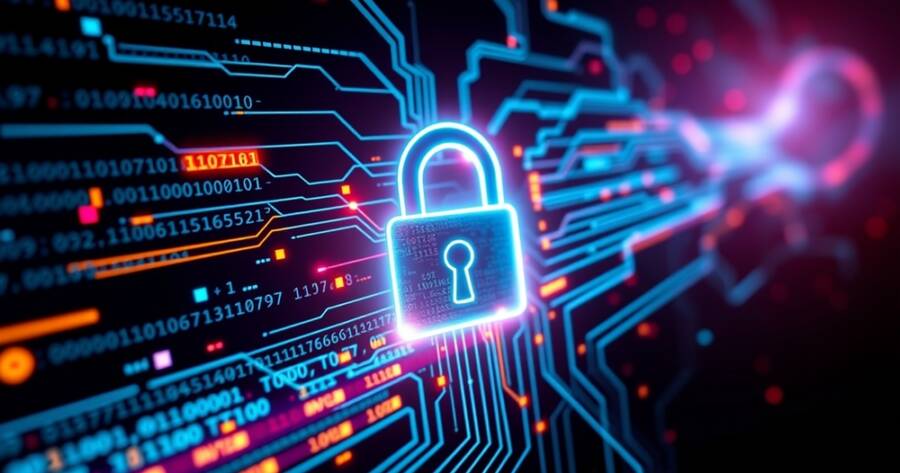In our increasingly connected world, digital security has become paramount. From personal devices to online transactions, safeguarding privacy requires awareness and strategic actions. By understanding potential threats and adopting best practices, individuals can enhance their security, ensuring their digital presence remains protected. This approach to privacy fosters confidence and peace of mind in navigating the digital landscape.
Understanding Common Threats
Digital security threats come in various forms, including phishing, malware, and data breaches. Phishing attacks often use deceptive emails or messages to trick individuals into revealing personal information. Recognizing suspicious links and verifying sender authenticity is crucial in preventing such scams.
Malware, including viruses and ransomware, can infect devices through downloaded files or compromised websites. Installing reputable antivirus software and applying regular updates are effective measures against these threats. Awareness of potential risks creates a proactive mindset, essential for robust digital security.
Strengthening Password Practices
Passwords are the first line of defense in digital security. Creating strong, unique passwords for each account reduces the risk of unauthorized access. Incorporating a combination of letters, numbers, and symbols enhances password complexity.
Using password managers can simplify the management of multiple accounts, allowing users to maintain strong passwords without memorization. Regularly updating passwords and enabling two-factor authentication offer additional layers of security. These practices fortify accounts against potential breaches, safeguarding personal information.
Embracing Two-Factor Authentication
Two-factor authentication (2FA) provides an additional security layer by requiring a second verification step. This might involve receiving a code via SMS, email, or authentication app. Implementing 2FA significantly enhances account protection, even if passwords are compromised.
By enabling 2FA on key accounts—such as email, financial services, and social media—users strengthen defenses against unauthorized access. Regularly reviewing which apps and devices have 2FA enabled further ensures consistent security. This proactive approach offers a simple yet effective way to bolster digital privacy.
Securing Your Network
Home networks are gateways to personal devices and data. Securing Wi-Fi with strong encryption, such as WPA3, prevents unauthorized access. Regularly updating router firmware and disabling remote management adds further protection.
Implementing a guest network isolates main devices from visitors, adding an extra security layer. Using virtual private networks (VPNs) encrypts internet traffic, protecting data from prying eyes on public and private networks alike. Network security practices create a solid foundation, securing all connected devices.
Identifying Safe Websites
Browsing safe websites reduces exposure to security threats. Checking website URLs for HTTPS encryption indicates a secure connection, protecting data exchanged between user and site. Third-party certifications or trust seals can provide additional assurance of a site’s legitimacy.
Being cautious with public Wi-Fi, where data can be more vulnerable, reinforces safe browsing habits. Employing browser security settings and considering extensions that block tracking or ads provide further layers of protection. These mindful practices help navigate the web securely and confidently.
Regular System Maintenance
Keeping devices updated ensures protection against newly discovered vulnerabilities. Regularly updating operating systems, software, and apps integrates the latest security patches and fixes. Cleaning out unused apps and clearing cache reduces vulnerabilities and enhances performance.
Conducting routine scans with antivirus software detects potential threats early. Maintaining backups of important data protects against ransomware and data loss. Regular system maintenance not only secures devices but enhances the overall digital experience, fostering reliability and efficiency.
Educating Family and Friends
Sharing digital security knowledge extends protection across social networks. Educating family and friends about best practices empowers them to safeguard their digital footprints. Hosting workshops or discussions encourages open dialogue and community learning.
By fostering a culture of awareness and vigilance, the collective digital community becomes stronger. Encouraging loved ones to adopt similar precautions ensures comprehensive protection, extending security beyond individual efforts to communal safety. This shared responsibility enhances security for all.
Learn More Today!
Digital security in our connected world requires vigilance, awareness, and decisive action. By understanding threats, strengthening passwords, and securing networks, individuals can protect their privacy effectively.
Embracing consistent security practices and educating those around you fosters a culture of digital responsibility. This proactive approach ensures a more secure and confident navigation of the digital landscape, allowing individuals to embrace technology with assurance and peace of mind.

